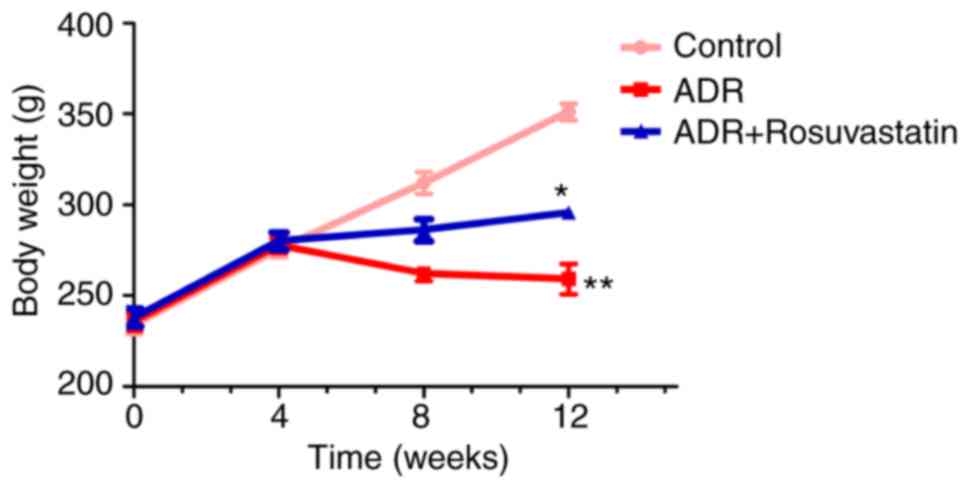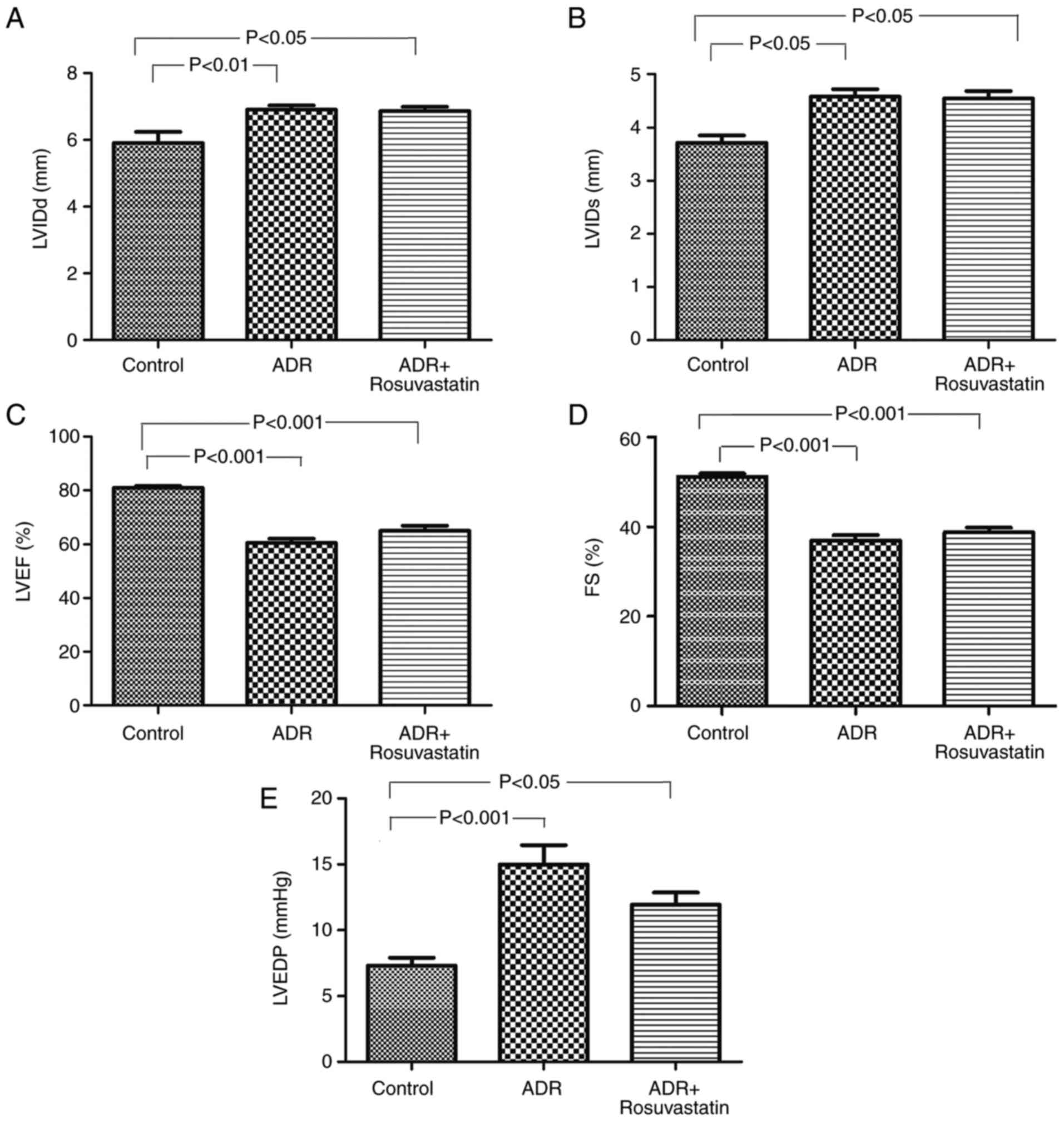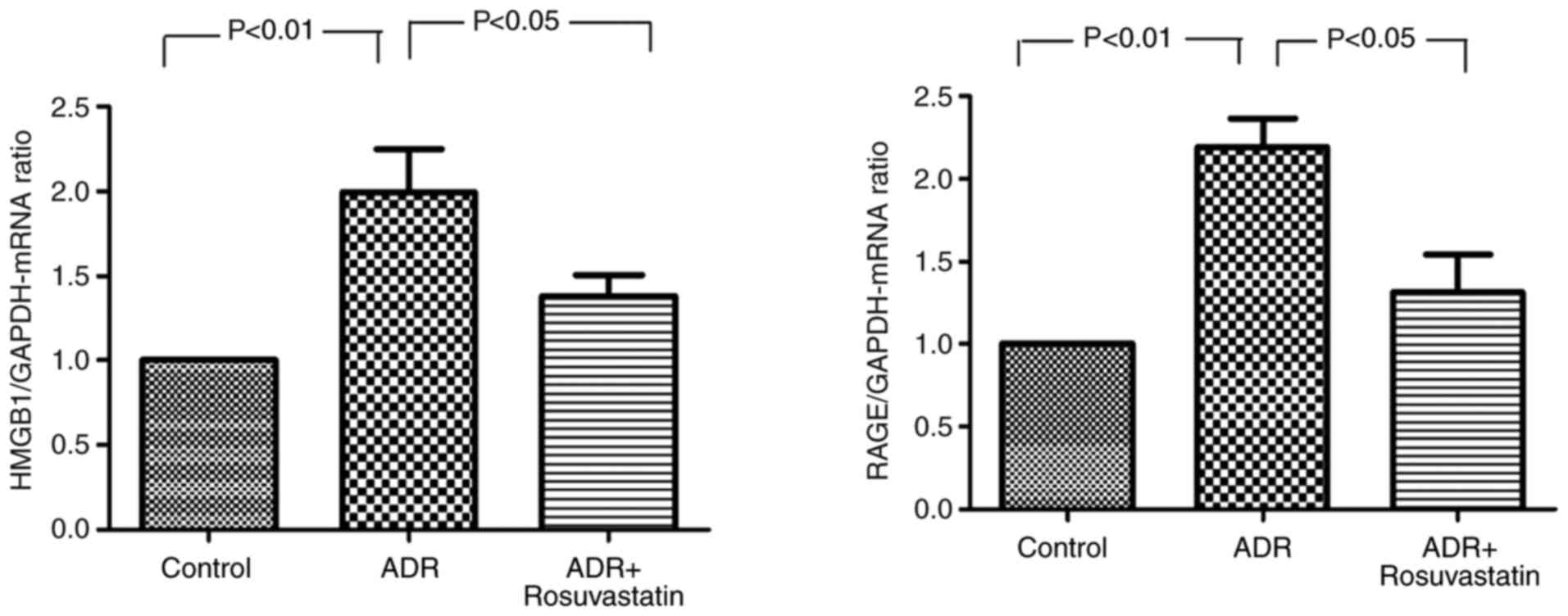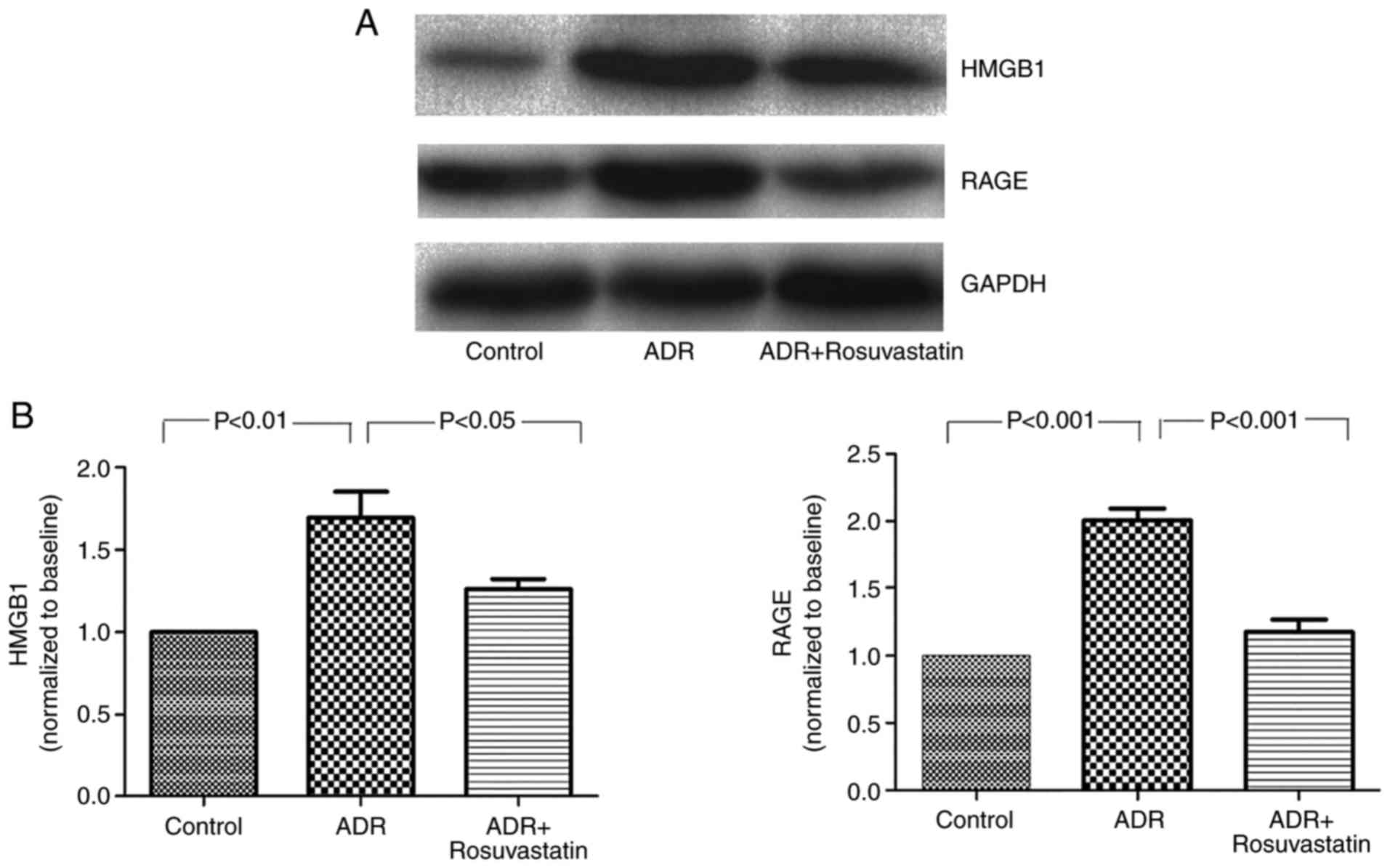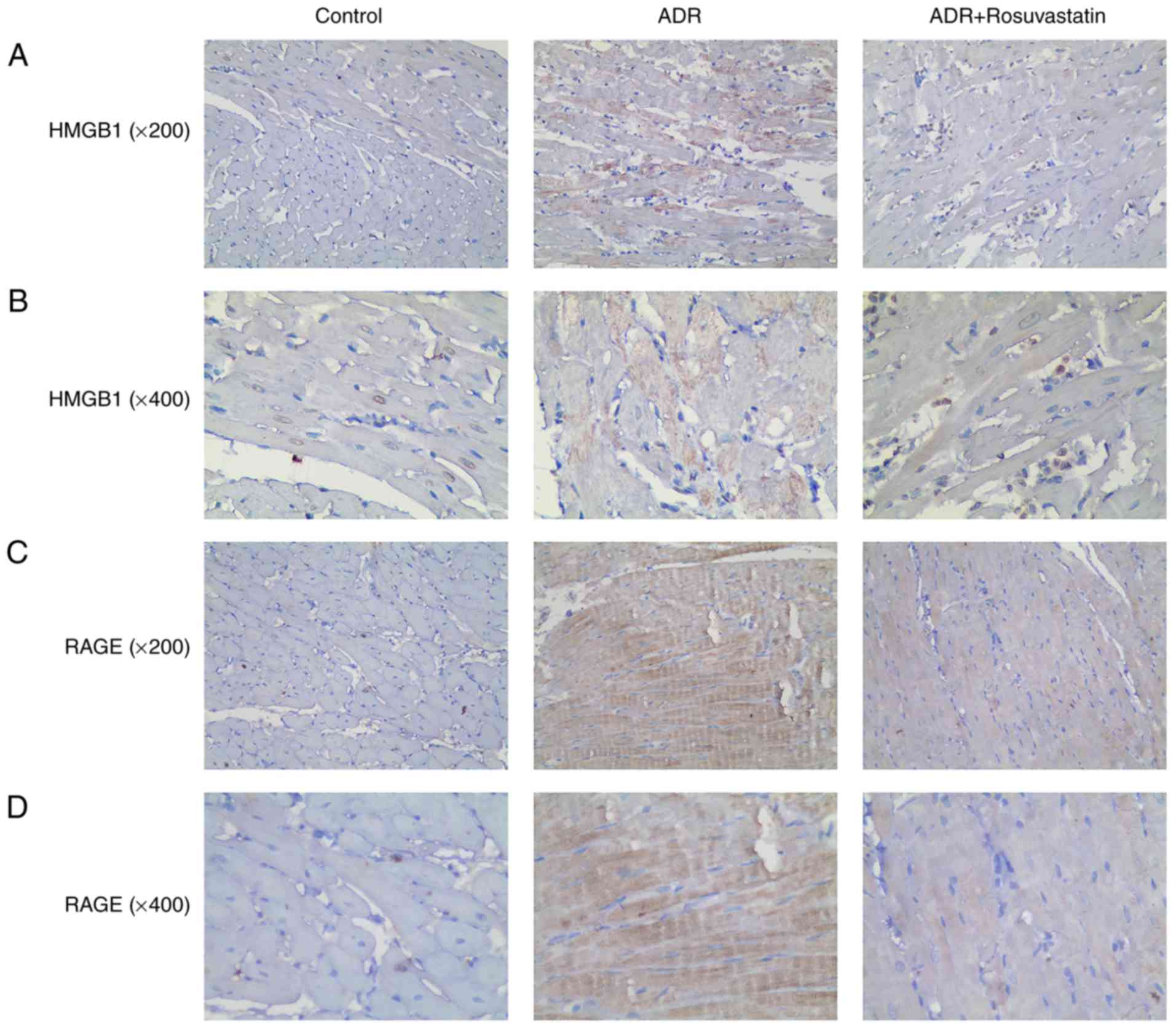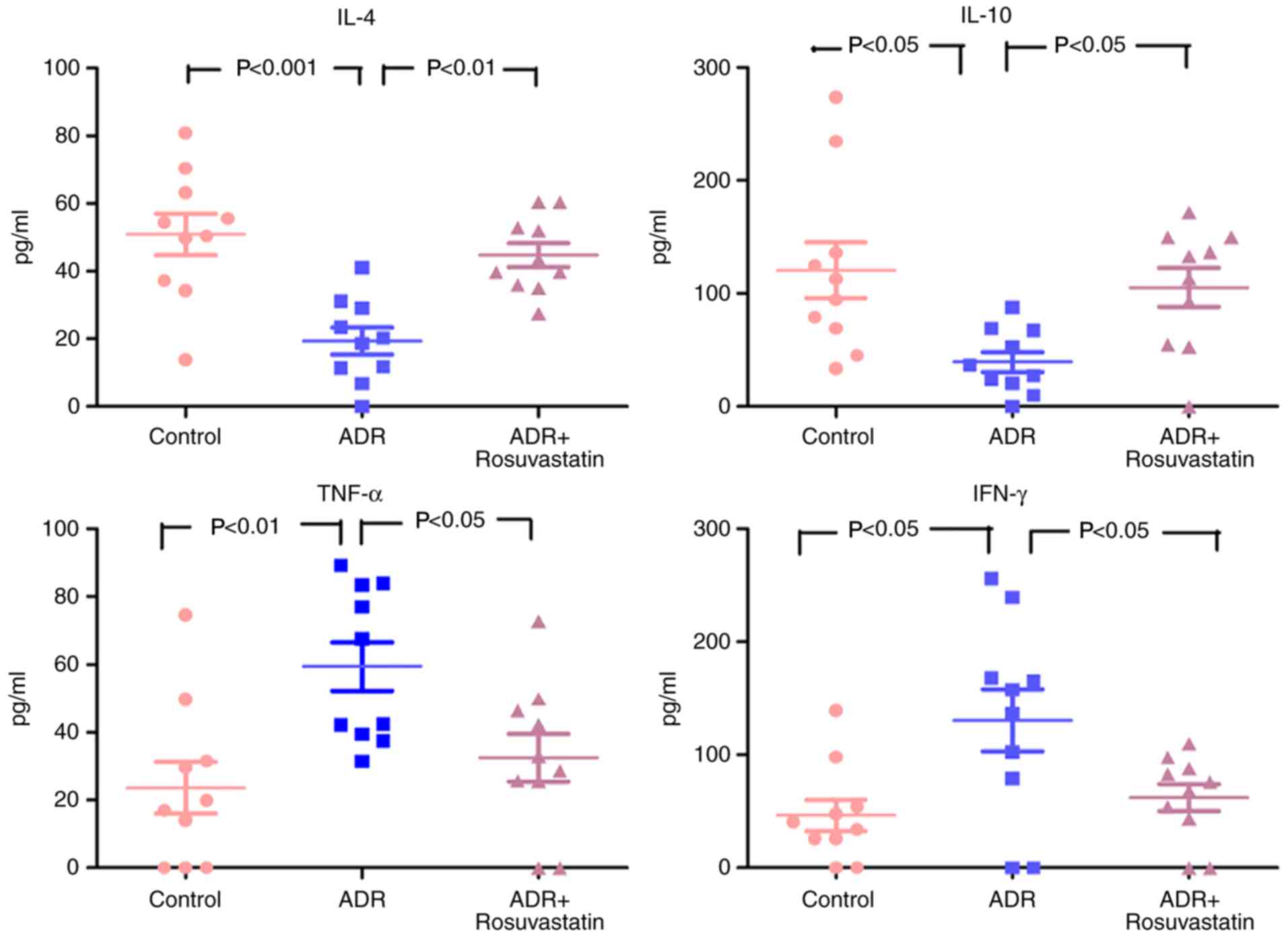|
1
|
Christensen HM, Schou M, Goetze JP, Faber
J, Frystyk J, Flyvbjerg A and Kistorp C: Body mass index in chronic
heart failure: Association with biomarkers of neurohormonal
activation, inflammation and endothelial dysfunction. BMC
Cardiovasc Disord. 13:802013. View Article : Google Scholar : PubMed/NCBI
|
|
2
|
Kazymyrko VK, Kutovyi VV, Ivanyts’ka LM,
Dubkova AG and Silant’ieva TS: Biomarkers of iron metabolism and
inflammation in patients with chronic heart failure and various
types of left ventricular dysfunction (In Ukrainian). Lik Sprava.
19–22. 2013.
|
|
3
|
Ismahil MA, Hamid T, Bansal SS, Patel B,
Kingery JR and Prabhu SD: Remodeling of the mononuclear phagocyte
network underlies chronic inflammation and disease progression in
heart failure: Critical importance of the cardiosplenic axis. Circ
Res. 114:266–282. 2014. View Article : Google Scholar
|
|
4
|
Zykov KA, Tatenkulova SN, Masenko VP,
Kuznetsova TV, Rvacheva AV and Belenkov IuN: Characteristics of
autoimmune reactions in chronic cardiac failure of different
etiology (In Russian). Ter Arkh. 81:22–28. 2009.
|
|
5
|
Yamada S and Maruyama I: HMGB1, a novel
inflammatory cytokine. Clin Chim Acta. 375:36–42. 2007. View Article : Google Scholar
|
|
6
|
Bustin M and Reeves R: High-mobility-group
chromosomal proteins: Architectural components that facilitate
chromatin function. Prog Nucleic Acid Res Mol Biol. 54:35–100.
1996. View Article : Google Scholar : PubMed/NCBI
|
|
7
|
Park JS, Arcaroli J, Yum HK, Yang H, Wang
H, Yang KY, Choe KH, Strassheim D, Pitts TM, Tracey KJ, et al:
Activation of gene expression in human neutrophils by high mobility
group box 1 protein. Am J Physiol Cell Physiol. 284:C870–C879.
2003. View Article : Google Scholar : PubMed/NCBI
|
|
8
|
Scaffidi P, Misteli T and Bianchi ME:
Release of chromatin protein HMGB1 by necrotic cells triggers
inflammation. Nature. 418:191–195. 2002. View Article : Google Scholar : PubMed/NCBI
|
|
9
|
Kostova N, Zlateva S, Ugrinova I and
Pasheva E: The expression of HMGB1 protein and its receptor RAGE in
human malignant tumors. Mol Cell Biochem. 337:251–258. 2010.
View Article : Google Scholar
|
|
10
|
Volz HC, Kaya Z, Katus HA and Andrassy M:
The role of HMGB1/RAGE in inflammatory cardiomyopathy. Semin Thromb
Hemost. 36:185–194. 2010. View Article : Google Scholar : PubMed/NCBI
|
|
11
|
Park JS, Svetkauskaite D, He Q, Kim JY,
Strassheim D, Strassheim D, Ishizaka A and Abraham E: Involvement
of toll-like receptors 2 and 4 in cellular activation by high
mobility group box 1 protein. J Biol Chem. 279:7370–7377. 2004.
View Article : Google Scholar
|
|
12
|
Zhang Q, O’Hearn S, Kavalukas SL and
Barbul A: Role of high mobility group box 1 (HMGB1) in wound
healing. J Surg Res. 176:343–347. 2012. View Article : Google Scholar
|
|
13
|
Li W, Sama AE and Wang H: Role of HMGB1 in
cardiovascular diseases. Curr Opin Pharmacol. 6:130–135. 2006.
View Article : Google Scholar : PubMed/NCBI
|
|
14
|
Ding HS and Yang J: High mobility group
box-1 and cardiovascular diseases. Saudi Med J. 31:486–489.
2010.PubMed/NCBI
|
|
15
|
Liu T, Zhang DY, Zhou YH, Han QF, Wang LH,
Wu L and Yao HC: Increased serum HMGB1 level may predict the fatal
outcomes in patients with chronic heart failure. Int J Cardiol.
184:318–320. 2015. View Article : Google Scholar : PubMed/NCBI
|
|
16
|
Volz HC, Laohachewin D, Schellberg D,
Wienbrandt AR, Nelles M, Zugck C, Kaya Z, Katus HA and Andrassy M:
HMGB1 is an independent predictor of death and heart
transplantation in heart failure. Clin Res Cardiol. 101:427–435.
2012. View Article : Google Scholar : PubMed/NCBI
|
|
17
|
Volz HC, Seidel C, Laohachewin D, Kaya Z,
Muller OJ, Pleger ST, Lasitschka F, Bianchi ME, Remppis A, Bierhaus
A, et al: HMGB1: The missing link between diabetes mellitus and
heart failure. Basic Res Cardiol. 105:805–820. 2010. View Article : Google Scholar : PubMed/NCBI
|
|
18
|
Blumenthal RS: Statins: Effective
antiatherosclerotic therapy. Am Heart J. 139:577–583. 2000.
View Article : Google Scholar : PubMed/NCBI
|
|
19
|
Stalker TJ, Lefer AM and Scalia R: A new
HMG-CoA reductase inhibitor, rosuvastatin, exerts anti-inflammatory
effects on the microvascular endothelium: The role of mevalonic
acid. Br J Pharmacol. 133:406–412. 2001. View Article : Google Scholar : PubMed/NCBI
|
|
20
|
Yang J, Huang C, Yang J, Jiang H and Ding
J: Statins attenuate high mobility group box-1 protein induced
vascular endothelial activation: A key role for TLR4/NF-kappaB
signaling pathway. Mol Cell Biochem. 345:189–195. 2010. View Article : Google Scholar : PubMed/NCBI
|
|
21
|
Han QF, Wu L, Zhou YH, Wang LH, Zhang DY,
Liu T and Yao HC: Simvastatin protects the heart against ischemia
reperfusion injury via inhibiting HMGB1 expression through PI3K/Akt
signal pathways. Int J Cardiol. 201:568–569. 2015. View Article : Google Scholar : PubMed/NCBI
|
|
22
|
Jones SP, Gibson MF, Rimmer DM III, Gibson
TM, Sharp BR and Lefer DJ: Direct vascular and cardioprotective
effects of rosuvastatin, a new HMG-CoA reductase inhibitor. J Am
Coll Cardiol. 40:1172–1178. 2002. View Article : Google Scholar : PubMed/NCBI
|
|
23
|
Hauck L, Stanley-Hasnain S, Fung A, Grothe
D, Rao V, Mak TW and Billia F: Cardiac-specific ablation of the E3
ubiquitin ligase Mdm2 leads to oxidative stress, broad
mitochondrial deficiency and early death. PLoS One.
12:e01898612017. View Article : Google Scholar : PubMed/NCBI
|
|
24
|
Livak KJ and Schmittgen TD: Analysis of
relative gene expression data using real-time quantitative PCR and
the 2−ΔΔCT method. Methods. 25:402–408. 2001. View Article : Google Scholar
|
|
25
|
Rabelo E, De Angelis K, Bock P, Gatelli
Fernandes T, Cervo F, Belló Klein A, Clausell N and Cláudia
Irigoyen M: Baroreflex sensitivity and oxidative stress in
adriamycin-induced heart failure. Hypertension. 38:576–580. 2001.
View Article : Google Scholar : PubMed/NCBI
|
|
26
|
Zhu Z and Fang Z: Statin protects
endothelial cell against ischemia reperfusion injury through
HMGB1/TLR4 pathway. Int J Cardiol. 203:742016. View Article : Google Scholar
|
|
27
|
Haraba R, Suica VI, Uyy E, Ivan L and
Antohe F: Hyperlipidemia stimulates the extracellular release of
the nuclear high mobility group box 1 protein. Cell Tissue Res.
346:361–368. 2011. View Article : Google Scholar : PubMed/NCBI
|
|
28
|
Prasad K: Do statins have a role in
reduction/prevention of post-PCI restenosis. Cardiovasc Ther.
31:12–26. 2013. View Article : Google Scholar
|
|
29
|
Du X, Hu X and Wei J: Postconditioning
with rosuvastatin reduces myocardial ischemia-reperfusion injury by
inhibiting high mobility group box 1 protein expression. Exp Ther
Med. 7:117–120. 2014. View Article : Google Scholar
|
|
30
|
Ke D, Fang J, Fan L, Chen Z and Chen L:
Regulatory T cells contribute to rosuvastatin-induced
cardioprotection against ischemia-reperfusion injury. Coron Artery
Dis. 24:334–341. 2013. View Article : Google Scholar : PubMed/NCBI
|
|
31
|
Shen Ma, Liu DW, Pan J, Yu J, Shi L, Deng
W, Zhu L, Yang L, Liu FJ, et al: Statin function as an
anti-inflammation therapy for depression in patients with coronary
artery disease by downregulating interleukin-1beta. J Cardiovasc
Pharmacol. 67:129–135. 2016. View Article : Google Scholar
|
|
32
|
Greque GV, Serrano CV Jr, Strunz CM,
Soeiro A, Santos M, Pivateli F, Jacob JL, Pesaro AE, Nicolau JC and
Kalil-Filho R: Preprocedural statin therapy, inflammation, and
myocardial injury in low-risk stable coronary artery disease
patients submitted to coronary stent implantation. Catheter
Cardiovasc Interv. 87:222–229. 2016. View Article : Google Scholar
|
|
33
|
Bonsu KO, Reidpath DD and Kadirvelu A:
Effects of statin treatment on inflammation and cardiac function in
heart failure: An adjusted indirect comparison meta-analysis of
randomized trials. Cardiovasc Ther. 33:338–346. 2015. View Article : Google Scholar : PubMed/NCBI
|
|
34
|
Fei L, Zhang J, Niu H, Yuan C and Ma X:
Effects of rosuvastatin and MiR-126 on myocardial injury induced by
acute myocardial infarction in rats: Role of vascular endothelial
growth factor A (VEGF-A). Med Sci Monit. 22:2324–2334. 2016.
View Article : Google Scholar : PubMed/NCBI
|
|
35
|
Kim YH, Park SM, Kim M, Kim SH, Lim SY,
Lim SY, Ahn JC, Song WH and Shim WJ: Cardioprotective effects of
rosuvastatin and carvedilol on delayed cardiotoxicity of
doxorubicin in rats. Toxicol Mech Methods. 22:488–498. 2012.
View Article : Google Scholar : PubMed/NCBI
|
|
36
|
Xu L, Zang P, Feng B and Qian Q:
Atorvastatin inhibits the expression of RAGE induced by advanced
glycation end products on aortas in healthy Sprague-Dawley rats.
Diabetol Metab Syndr. 6:1022014. View Article : Google Scholar : PubMed/NCBI
|
|
37
|
Jin D, Wu Y, Zhao L, Guo J, Zhang K and
Chen Z: Atorvastatin reduces serum HMGB1 levels in patients with
hyperlipidemia. Exp Ther Med. 4:1124–1126. 2012. View Article : Google Scholar : PubMed/NCBI
|
|
38
|
Yang H, Wang H, Wang Y, Addorisio M, Li J,
Postiglione MJ, Chavan SS, Al-Abed Y, Antoine DJ, Andersson U, et
al: The haptoglobin beta subunit sequesters HMGB1 toxicity in
sterile and infectious inflammation. J Intern Med. 282:76–93. 2017.
View Article : Google Scholar : PubMed/NCBI
|
|
39
|
Gao XJ, Qu YY, Liu XW, Zhu M, Ma CY, Jiao
YL, Cui B, Chen ZJ and Zhao YR: Immune complexes induce TNF-alpha
and BAFF production from U937 cells by HMGB1 and RAGE. Eur Rev Med
Pharmacol Sci. 21:1810–1819. 2017.PubMed/NCBI
|
|
40
|
Kokkola R, Andersson A, Mullins G, Ostberg
T, Treutiger CJ, Arnold B, Nawroth P, Andersson U, Harris RA and
Harris HE: RAGE is the major receptor for the proinflammatory
activity of HMGB1 in rodent macrophages. Scand J Immunol. 61:1–9.
2005. View Article : Google Scholar : PubMed/NCBI
|
|
41
|
Andersson U and Tracey KJ: HMGB1 is a
therapeutic target for sterile inflammation and infection. Annu Rev
Immunol. 29:139–162. 2011. View Article : Google Scholar : PubMed/NCBI
|
|
42
|
Luan ZG, Zhang H, Yang PT, Ma XC, Zhang C
and Guo RX: HMGB1 activates nuclear factor-kappaB signaling by RAGE
and increases the production of TNF-alpha in human umbilical vein
endothelial cells. Immunobiology. 215:956–962. 2010. View Article : Google Scholar : PubMed/NCBI
|
|
43
|
Dumitriu IE, Baruah P, Bianchi ME,
Manfredi AA and Rovere-Querini P: Requirement of HMGB1 and RAGE for
the maturation of human plasmacytoid dendritic cells. Eur J
Immunol. 35:2184–2190. 2005. View Article : Google Scholar : PubMed/NCBI
|
|
44
|
Saidi H, Bras M, Formaglio P, Melki MT,
Charbit B, Herbeuval JP and Gougeon ML: HMGB1 is involved in
IFN-alpha production and TRAIL expression by HIV-1-exposed
plasmacytoid dendritic cells: Impact of the crosstalk with NK
cells. PLoS Pathog. 12:e10054072016. View Article : Google Scholar
|
|
45
|
Sirois CM, Jin T, Miller AL, Bertheloot D,
Nakamura H, Horvath GL, Mian A, Jiang J, Schrum J, Bossaller L, et
al: RAGE is a nucleic acid receptor that promotes inflammatory
responses to DNA. J Exp Med. 210:2447–2463. 2013. View Article : Google Scholar : PubMed/NCBI
|
|
46
|
Huang LF, Yao YM, Zhang LT, Dong N, Yu Y
and Sheng ZY: The effect of high-mobility group box 1 protein on
activity of regulatory T cells after thermal injury in rats. Shock.
31:322–329. 2009. View Article : Google Scholar
|
|
47
|
Dumitriu IE, Baruah P, Valentinis B, Voll
RE, Herrmann M, Nawroth PP, Arnold B, Bianchi ME, Manfredi AA and
Rovere-Querini P: Release of high mobility group box 1 by dendritic
cells controls T cell activation via the receptor for advanced
glycation end products. J Immunol. 174:7506–7515. 2005. View Article : Google Scholar : PubMed/NCBI
|
|
48
|
Liu J, Wang H and Li J: Inflammation and
inflammatory cells in myocardial infarction and reperfusion injury:
A double-edged sword. Clin Med Insights Cardiol. 10:79–84. 2016.
View Article : Google Scholar : PubMed/NCBI
|
|
49
|
Wu B, Su Z, Lin R, Dai R, Chen C and Wu H:
Short-time pretreatment of rosuvastatin attenuates myocardial
ischemia and reperfusion injury by inhibiting high mobility group
box 1 protein expression. Int J Cardiol. 168:4946–4948. 2013.
View Article : Google Scholar : PubMed/NCBI
|
|
50
|
Hu X, Xu C, Zhou X, Cui B, Lu Z and Jiang
H: PI3K/Akt signaling pathway involved in cardioprotection of
preconditioning with high mobility group box 1 protein during
myocardial ischemia and reperfusion. Int J Cardiol. 150:222–223.
2011. View Article : Google Scholar : PubMed/NCBI
|
|
51
|
Ding HS, Yang J, Gong FL, Yang J, Ding JW,
Li S and Jiang YR: High mobility group [corrected] box 1 mediates
neutrophil recruitment in myocardial ischemia-reperfusion injury
through toll like receptor 4-related pathway. Gene. 509:149–153.
2012. View Article : Google Scholar : PubMed/NCBI
|
|
52
|
Wang JQ, Wu GR, Wang Z, Dai XP and Li XR:
Long-term clinical outcomes of statin use for chronic heart
failure: A meta-analysis of 15 prospective studies. Heart Lung
Circ. 23:105–113. 2014. View Article : Google Scholar
|
|
53
|
Henninger C, Huelsenbeck S, Wenzel P,
Brand M, Huelsenbeck J, Schad A and Fritz G: Chronic heart damage
following doxorubicin treatment is alleviated by lovastatin.
Pharmacol Res. 91:47–56. 2015. View Article : Google Scholar
|
|
54
|
Mansouri E, Jangaran A and Ashtari A:
Protective effect of pravastatin on doxorubicin-induced
hepatotoxicity. Bratisl Lek Listy. 118:273–277. 2017.PubMed/NCBI
|















